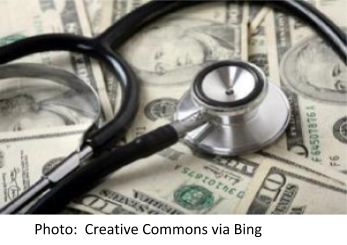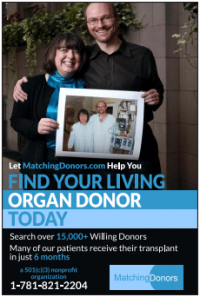 Source: Covered California
Source: Covered California
March 27, 2020 (Sacramento) -- Covered California on Monday released the first national projection of health care costs due to the coronavirus (COVID-19) pandemic.
The analysis estimates the projected costs for 170 million Americans in the commercial market — which includes the individual, small-group and large-group markets — for testing, treatment and care specifically related to COVID-19 ranges from a low of $34 billion to $251 billion or more in the first year of the pandemic.
“Covered California’s analysis shows the impact of COVID-19 will be significant, and that absent federal action, consumers, employers and our entire health care system may be facing unforeseen costs that could exceed $251 billion,” said Covered California Executive Director Peter V. Lee. “Consumers will feel these costs through higher out-of-pocket expenses and premiums, as well as the potential of employers dropping coverage or shifting more costs to employees.”
Covered California’s chief actuary, John Bertko, prepared the report after engaging with external actuaries with deep expertise in the commercial insurance markets and after analyzing expert clinical review and interviews with health insurance plan leaders.
The analysis found:
The one-year projected costs in the commercial market range from $34 billion to $251 billion for testing, treatment and care specifically related to COVID-19.
Those potential COVID-19 costs for 2020 could range from 2 percent of premium to more than 21 percent of premium if they had been priced for.
Premiums in the individual and employer markets for 2021 — which are in the process of being set right now — could be 40 percent or more solely because of these unexpected COVID-19 costs in the absence of federal action, as insurers would seek to recoup unplanned for losses from 2020 and budget for pandemic-related costs in 2021.
“Given that insurers will be submitting 2021 rates in May and finalizing them around July 1, congressional action is needed very soon in order to affect 2021 premiums,” Bertko said. “While there is a lot of uncertainty with anything related to COVID-19, one thing we can be certain of is that the impact will be significant, and now is the time to take action.”
Covered California sent the policy/actuarial brief “The Potential National Health Cost Impacts to Consumers, Employers and Insurers in the Commercial Market Due to COVID-19” to members of Congress to help inform the ongoing discussions at the federal level about how to handle the COVID-19 response.
“These increased costs could mean that many of the 170 million Americans in the commercial market may lose their coverage and go without needed care as we battle a global health crisis,” Lee said. “These are not ‘insurer’ costs — these are costs directly borne by individual Americans in the form of cost-sharing and premiums; these are costs to small and large businesses that are struggling; these are costs to individuals who may avoid needed care.”
Covered California suggested several actions that Congress could take to mitigate the potential impact of these cost increases on consumers:
Enhance the federal financial assistance provided in the individual market to increase the level of tax credits for those earning under 400 percent of the federal poverty level (FPL) and expand subsidies to those earning more than 400 percent FPL as California implemented on a three-year basis in 2020.
Establish a temporary program to limit the costs of COVID-19 for health insurers, self-insured employers and those they cover, which would directly benefit individuals and small employers for 2020 and allow for more certainty in their pricing for 2021.
Establish a national special-enrollment period for the individual market, such as has already been adopted by 12 marketplaces representing 30 percent of Americans.
“As we have seen throughout this crisis, there is no time to waste. We must take action now to prevent the pain of this epidemic from becoming worse for hundreds of millions of Americans next year,” Lee said. “Reinsurance policies under consideration in Washington — that offer mechanisms to provide federal funding for portions of unforeseen COVID-19 costs for the individual and employer markets, along with Medicaid managed care programs — could provide needed funds and certainty for consumers, small and large employers and states across the nation.”
Lee also noted that while Covered California’s analysis deals with the commercial market, other populations — including those in Medicare, Medicaid, other public programs and the uninsured — will also need a comprehensive review and solutions to address the unplanned for costs.
COVID-19 Special-Enrollment Period
Covered California’s analysis comes just days after it announced a special-enrollment period for uninsured individuals who need health care coverage amid the COVID-19 pandemic. From now until June 30, anyone who meets Covered California’s eligibility requirements can enroll in health care coverage, similar to the rules in place during the annual open-enrollment period.
Staying Safe While Getting Help Enrolling
In an effort to support the state’s social distancing recommendations, Covered California is working with the more than 10,000 Certified Insurance Agents who help Californians sign up and understand their coverage options through phone-based service models.
“We are in a different world right now, but social distancing does not mean you cannot get personal help,” Lee said. “Our agents and staff are stepping up to help people by phone and support them to enroll online.”
Consumers can easily find out if they are eligible Medi-Cal or other forms of financial help and see which plans are available in their area by using the CoveredCA.com Shop and Compare Tool and entering their ZIP code, household income and the ages of those who need coverage.









Comments
Another reason to isolate. . .
The Department of Homeland Security (DHS) . . .